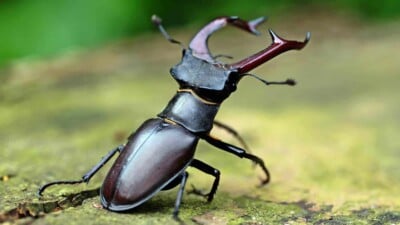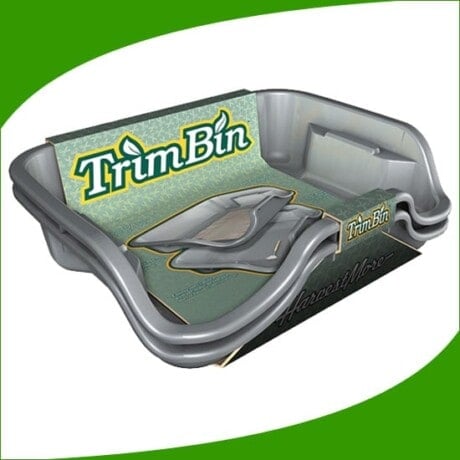Harvesting & Preserving
“I believe that if ever I had to practice cannibalism, I might manage if there were enough tarragon around” – James Beard, TV personality & chef
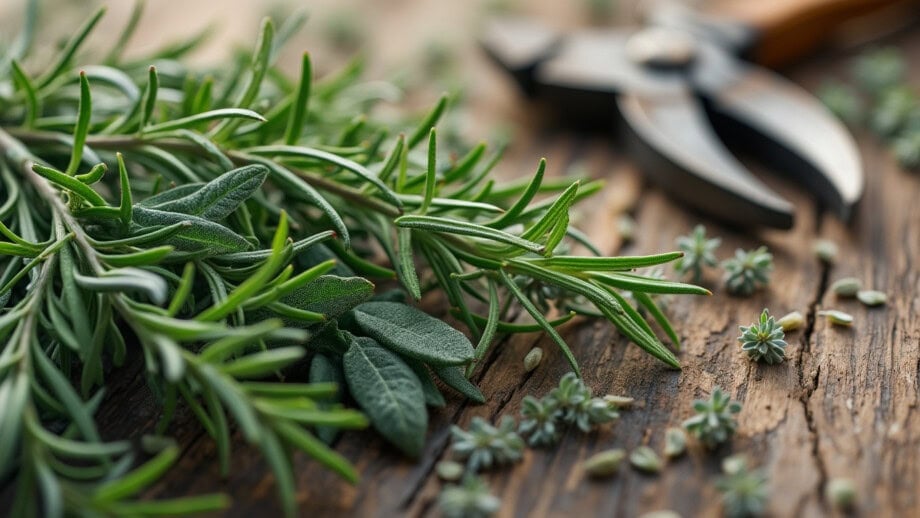
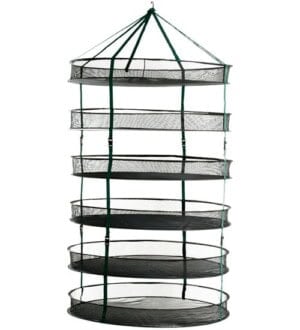
Best product
for Drying Herbs
STACK!T
Made of breathable mesh that allows for quick drying and maximum ventilation.
Learn moreWhen to harvest herbs is really dependent on the type you are growing and the plant part you intend to use. For example, when harvesting mint, you’ll just be picking the leaves. In other cases, you may be picking the flowers, seeds or roots.
As a general rule, herbs grown for their leaves should be harvested before they flower. After they flower, most herbs tend to lose their flavor or become bitter. You also want to pick the leaves when they are tender and contain the highest amount of oil, which supplies taste and fragrance (see The Herbal Harvest). For most herbs, the best time to pick is early in the morning just as the dew evaporates, but before the heat of the day. Do not wash the leaves or aromatic oils will be lost.
Many flowering herbs, like lavender, borage and chamomile, should be harvested before they are fully open. Harvest herbs grown for their seeds, like dill, fennel, coriander and caraway, as the seed pods begin changing color. Roots crops, like ginseng and goldenseal, should be dug at the end of the summer or early fall.
Preserve your precious bounty! Planet Natural offers a large selection of harvest equipment and supplies — from drying racks to vacuum sealers — to keep what you grow safe through the winter and beyond.
Harvest early and frequently to encourage plants to produce new growth. It’s okay to prune a perennial to about half its height. You can cut back an annual even more — to just a few inches. Many culinary herbs, including chives, basil, mint, parsley, and oregano grow back quickly and benefit from the constant pruning.
Keep harvesting annual herbs right up until frost. Perennial herbs should not be “snipped” past August. Harvesting perennials after this date (or one month before the first frost) may stimulate new growth that will not harden-off before the cold of winter.
Tip: Gather lavender and tarragon flowers in early July and then cut the plants back to about half their original height to promote a second bloom in the fall.
Preserving Herbs
Almost always, herbs taste best when used fresh (see Cooking with Fresh Herbs). After picking, their flavor and aroma tends to deteriorate much too quickly. If you cannot use them shortly after harvest, there are several short-term storage methods that are recommended to help keep their flavor for a couple of hours to a couple of days.
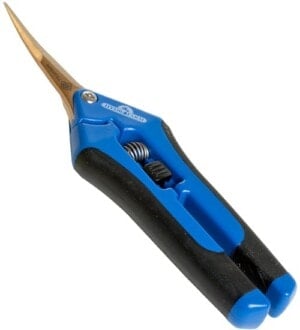
A BEST SELLER!
Curved-Blade (Titanium)
The curved titanium blade is useful for shaping foliage without damaging the plant.
$17.95Learn moreIdeal for deadheading, pruning and shaping! The Hydrofarm® Curved Blade Pruner is perfect for clipping dense foliage without damaging the plant. Tough titanium shears are 3X harder than steel, so they hold a sharp edge for a long time.
Several long stemmed herbs, like basil, cilantro and parsley can be stored in a glass of water similar to cut flowers. Just trim the ends and stick them in a glass with about an inch or so of water. Place them on the kitchen counter and they’ll remain fresh for up to a week.
Many fresh herbs, including rosemary, chives and thyme, can be stored a week or longer in your refrigerators’ vegetable bin. For best flavor, wrap them in a damp paper towel and then place in an open or a perforated plastic bag. Do NOT rinse until just before they are to be used. Keep in mind, the longer herbs are stored the greater their flavor loss will be.
Drying Herbs
For long term storage, and to retain the highest flavor and quality, consider drying herbs. Dried herbs can be kept for two or three years, but should really be used within a year. Any longer than this, and they won’t be as tasty or as fragrant. Sun, oven or dehydrator drying is not recommended, because the herbs will lose too much flavor and color.
To dry sturdy, low moisture herbs, like rosemary, thyme, dill, savory, sage, and parsley, cut whole branches of the plant and gently rinse in cool water. Tie the cuttings in small bunches and hang upside down in a dark, well-ventilated and dust-free room. When dry, usually within 2 to 3 weeks, remove the leaves from the stems and store whole in an air tight container. Crush or grind just before use.

Herbs with large, tender leaves and a high moisture content, including bay leaf, basil, lemon balm, lovage, mint, lemon verbena and tarragon, should be dried quickly to prevent mold. You can dry these herbs on frames covered with netting or window screen. Simply strip the best leaves from the stems and lay them in a single layer on the drying rack. Turn during the first few days and after about a week, when the leaves are completely dry, remove them and store in tightly closed containers for later use. Learn more about harvesting and drying herbs from the University of Illinois Extension.
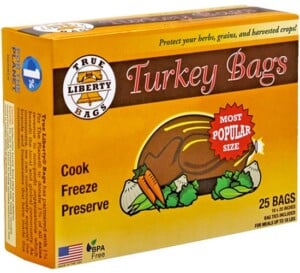
KEEPS CROPS FRESH!
Turkey Bags
Preserve your harvests by locking in the nutritional value of fresh garden crops.
$11.95Learn moreHome gardeners love True Liberty® Turkey Bags for their ability to preserve harvests, keeping crops fresh, healthy and stable, with all the aroma and flavor locked right in. Use them to store veggies, dried herbs and after market flowers.
Freezing Herbs
Another easy method for preserving herbs is to freeze them (see Freeze Fresh Herbs for Long-Term Storage). Simply wash the herbs and pat them dry, spread them out in a single layer on a pan, and put the pan into the freezer. When frozen, place the herbs in an air tight plastic container or bag and keep them in the freezer until ready to use.
Basil, borage, chives, dill, lemongrass, mint, oregano, sage, savory, tarragon and thyme all freeze well and will maintain their quality for up to six months. Chop chives and lemongrass before you freeze them. These herbs are thin and will freeze quickly.
Tip: You can create festive party drinks by freezing sprigs of mint and woodruff. After washing them, chop the herbs and place them in ice cube trays. Fill the trays with cold water and freeze until use.



